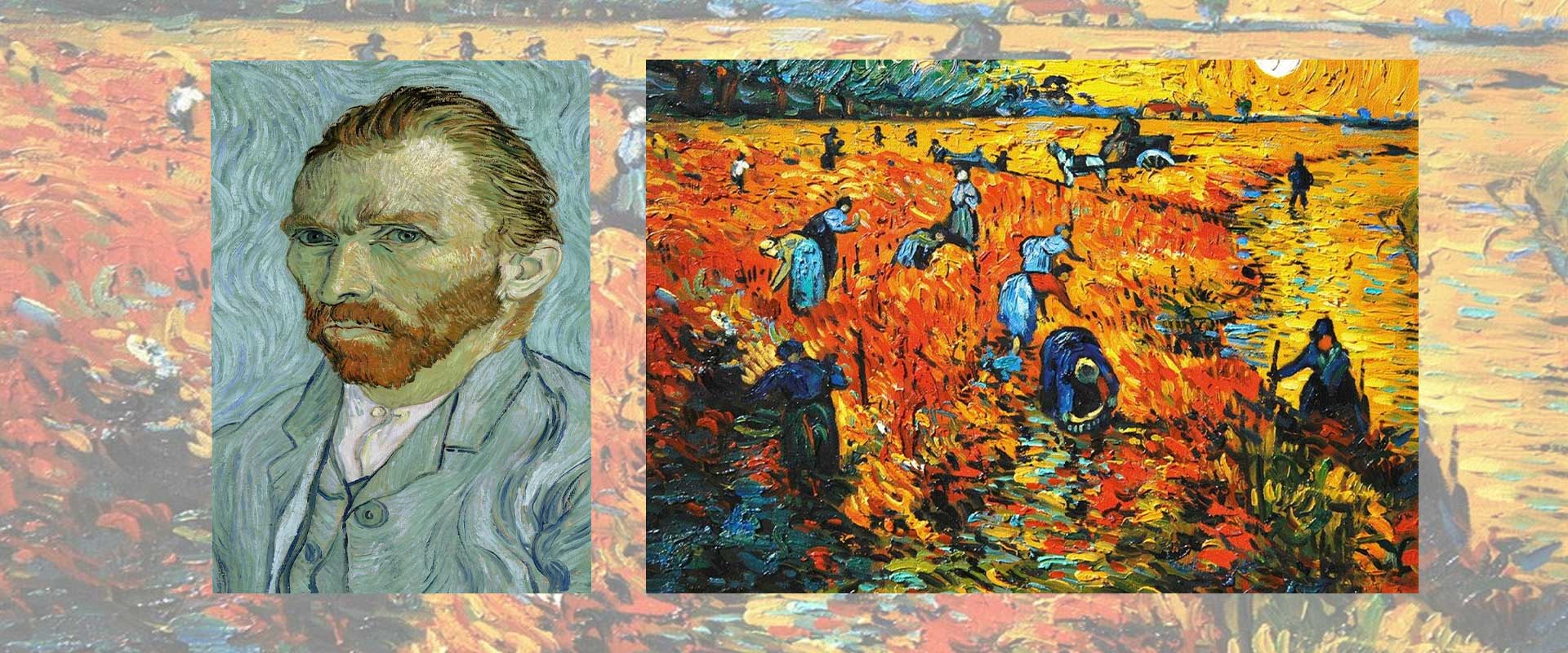Today, Vincent van Gogh is one of the most celebrated and recognizable artists in the world. His paintings hang in the most prestigious museums, sell for hundreds of millions, and inspire generations of artists and admirers alike. But during his lifetime, Van Gogh sold only one painting.
This fact leaves many people puzzled. How could someone so obviously talented go virtually unrecognized while alive? In this deep dive, we’ll explore the reasons behind Van Gogh’s commercial failure, from his mental health struggles to the conservative art world of his time.
The One Painting He Sold
The Red Vineyard (1888)
The Red Vineyard painting only Vincent van Gogh is known to have sold during his lifetime was “The Red Vineyard”, created in Arles, France. It was purchased in 1890 by Belgian artist Anna Boch for 400 francs (roughly $2,000 in today’s money).
Despite being a striking work—with rich golden light and vibrant red hues—it was the exception rather than the rule.
Why Didn’t Van Gogh Sell More Art?
1. Artistic Style Ahead of Its Time
Van Gogh’s bold brushstrokes, exaggerated forms, and emotionally charged colors didn’t match the mainstream tastes of the 1880s. At the time, academic art was still dominant—people preferred polished, realistic portraits and landscapes over expressive, turbulent compositions.
- His Post-Impressionist style was considered too radical
- The thick impasto technique and swirling motion confused many
- He lacked the traditional polish buyers were used to
In short, he was misunderstood by most art collectors of his era.
2. Struggles with Mental Health and Isolation
Vincent van Gogh battled severe mental illness, including depression, anxiety, and psychotic episodes. His condition made it difficult to form social connections, network with art dealers, or maintain a consistent public presence.
He also isolated himself in the south of France, particularly in Arles and later in a mental asylum in Saint-Rémy. While his brother Theo worked in the Paris art scene, Vincent lived far from the cultural center of Europe.
This distance—both physical and emotional—limited his exposure and opportunities to promote his work.
3. Lack of Self-Promotion
Unlike other artists of the time, Van Gogh was not part of a strong artistic circle that could help elevate his profile. He was passionate about art but lacked the business acumen or connections to market himself effectively.
- He rarely attended salons or art exhibitions
- He didn’t network with buyers or critics
- He relied almost entirely on his brother Theo for support
His intense focus on art-making—without the balance of self-promotion—meant his work remained largely unseen by potential collectors.
4. Theo’s Support Made Selling Less Urgent
Van Gogh’s younger brother, Theo van Gogh, was an art dealer who financially supported Vincent for most of his adult life. While Theo believed deeply in Vincent’s talent, his primary goal was to support his brother’s well-being, not aggressively sell his work.
In their many letters, Vincent expresses guilt about his dependence on Theo but also gratitude for the freedom to paint. Because Theo provided regular income, Van Gogh wasn’t desperate to sell—he was desperate to create.
Did Van Gogh Know His Value?
Van Gogh died in 1890 at the age of 37, believing he had failed. In a letter written shortly before his death, he stated, “I feel—I am a failure.” This tragic misunderstanding of his own legacy underscores just how unappreciated he was during his lifetime.
However, he also knew he was exploring something new and important. He often wrote about pushing boundaries, about trying to express emotion through color and line. So while he may have felt invisible, he also held onto some hope that future generations might understand his work.
Van Gogh’s Posthumous Rise to Fame
Shortly after Van Gogh’s death, Theo’s widow, Johanna van Gogh-Bonger, took on the mission of promoting his work. She organized exhibitions, published his letters, and helped build the mythos around his tortured genius.
By the early 20th century, the art world finally caught up with Van Gogh’s vision. His paintings began to sell, exhibitions toured Europe and America, and his reputation as a pioneering figure of modern art was firmly established.
A Legacy Beyond Sales
Though Vincent van Gogh only sold one painting while alive, his artistic legacy is immeasurable. He inspired generations of artists, helped shape Expressionism, Fauvism, and modern art, and gave us some of the most emotionally resonant artworks ever created.
His story reminds us that commercial success is not the only measure of artistic value. Van Gogh’s work continues to touch millions—not because it was once bought, but because it was once felt.
Want to Explore His Genius?
Bring the spirit of Van Gogh’s passion into your space with our Vincent van Gogh wall art prints. Featuring timeless pieces like Starry Night, Sunflowers, and Almond Blossoms, each print captures the bold brushstrokes and emotion that defined his vision.
Conclusion
Vincent van Gogh sold just one painting during his life, not because he lacked talent, but because the world wasn’t ready for him. Today, we recognize that his brushstrokes weren’t chaotic—they were revolutionary. His colors weren’t strange—they were symbolic. His isolation wasn’t failure—it was the birthplace of brilliance.
His art now stands as a testament to how vision, perseverance, and emotion can outlast time, trends, and tragedy.





